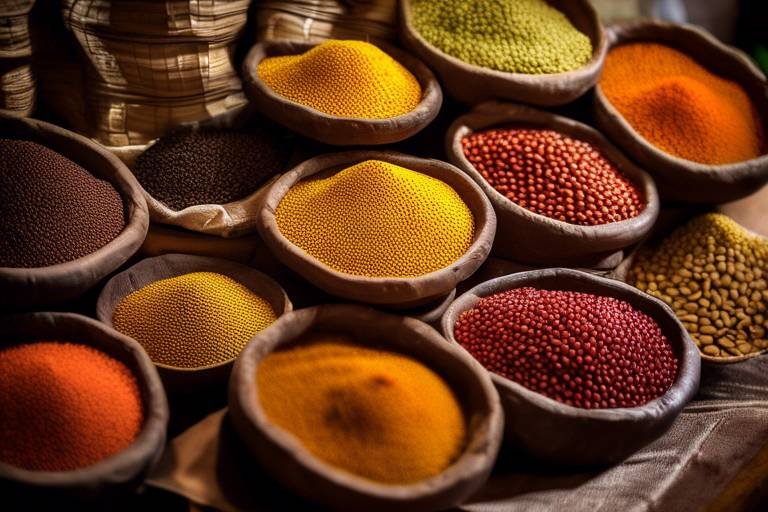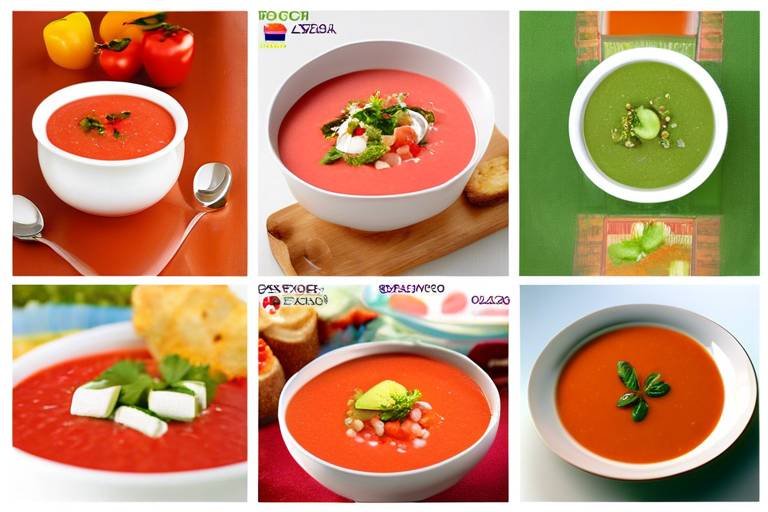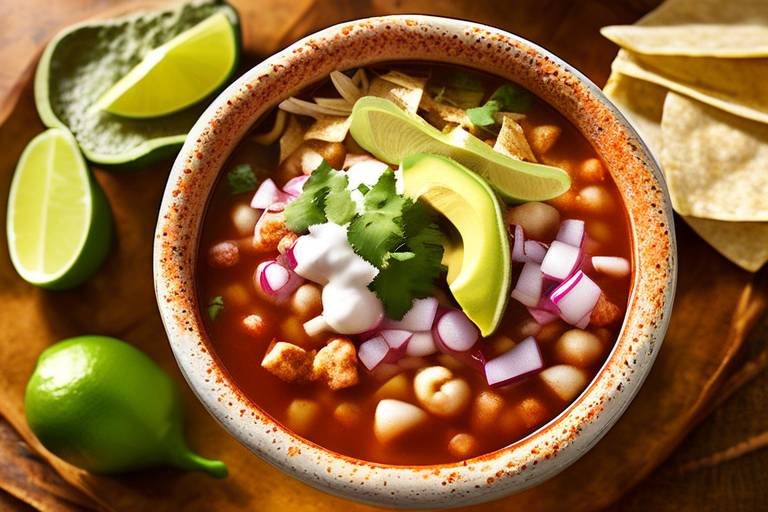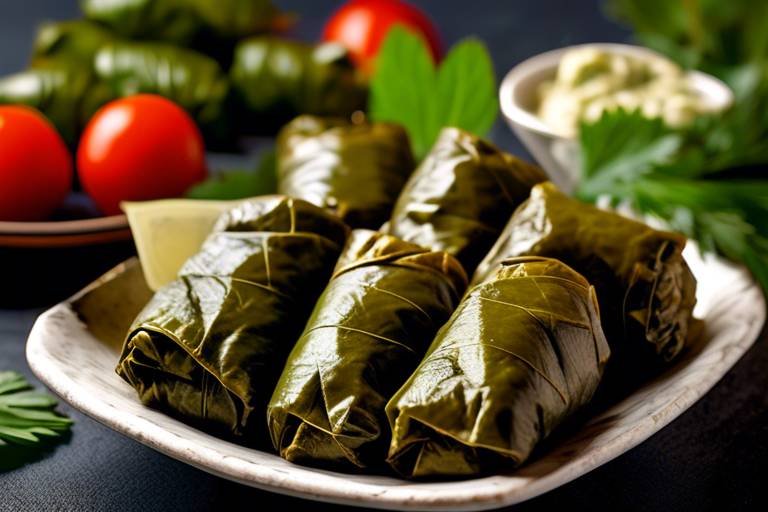Traditional Korean Kimchi - Recipes and Variations
Traditional Korean kimchi is a beloved staple in Korean cuisine, known for its bold flavors and health benefits. This iconic dish, originating from the rich culinary tradition of Korea, has evolved over centuries to offer a wide variety of recipes and regional specialties. From the history of kimchi to its diverse ingredients and preparation methods, let's delve into the world of traditional Korean kimchi and explore the endless possibilities and variations it offers.
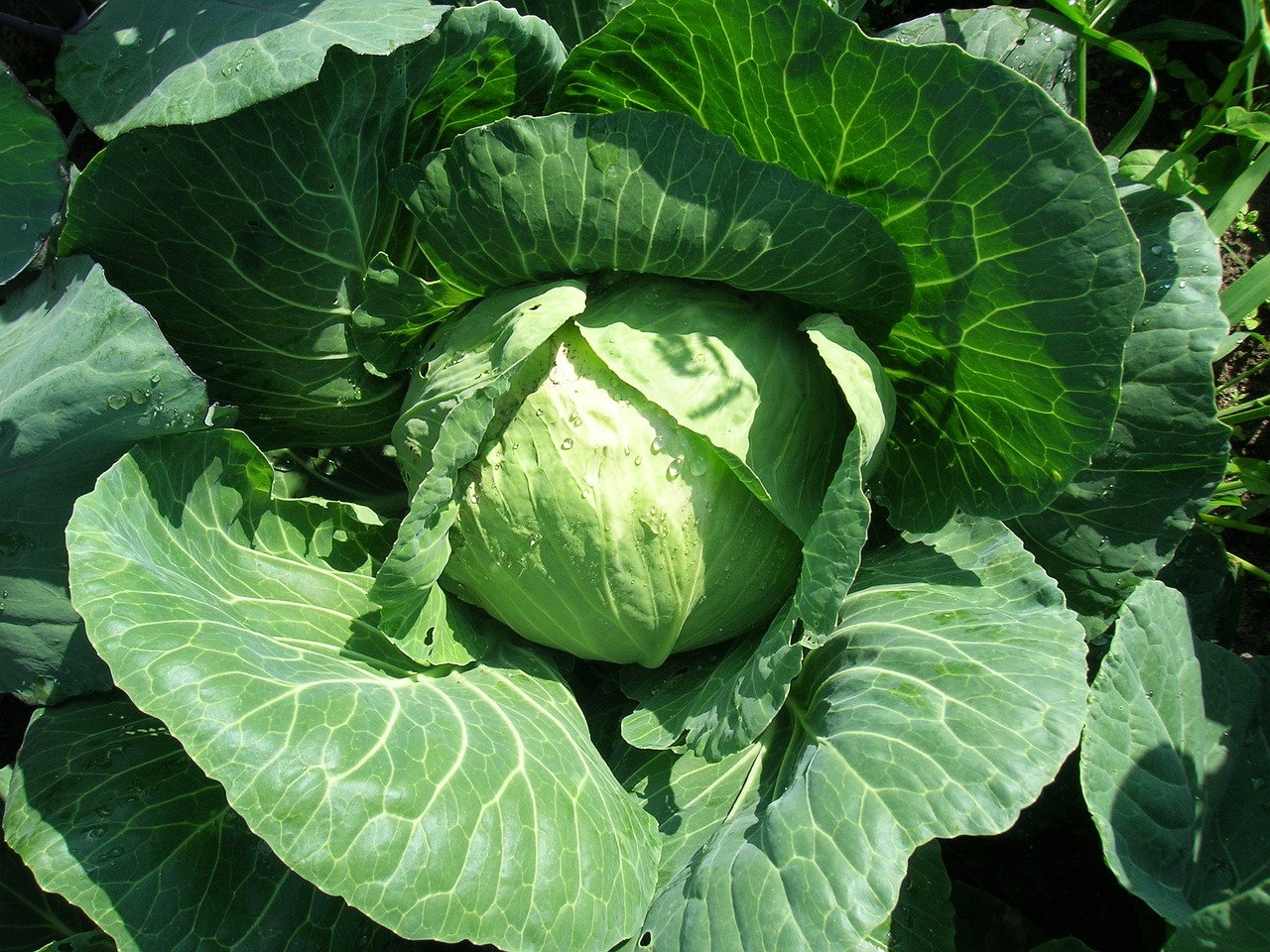
History of Kimchi
The dates back centuries in Korean culture, where it holds a significant place in the culinary traditions of the country. Originally, kimchi was a way to preserve vegetables during the harsh winter months, ensuring a vital source of nutrition when fresh produce was scarce. Over time, kimchi evolved from a simple preservation method to a beloved dish enjoyed by Koreans and people worldwide.
One fascinating aspect of kimchi's history is its close connection to Korean identity and resilience. The dish has withstood the test of time, surviving wars, invasions, and political upheavals. Its enduring presence on Korean tables symbolizes the strength and endurance of the Korean people through challenging times.
Historically, kimchi was primarily made with napa cabbage, radish, and a variety of seasonings. The fermentation process not only preserved the vegetables but also enhanced their flavors, creating a unique and tangy taste that became synonymous with kimchi.
As kimchi gained popularity beyond Korea's borders, it became a symbol of Korean culture and cuisine worldwide. Today, kimchi is not just a dish but a cultural ambassador, representing the rich history and flavors of Korea to global audiences.
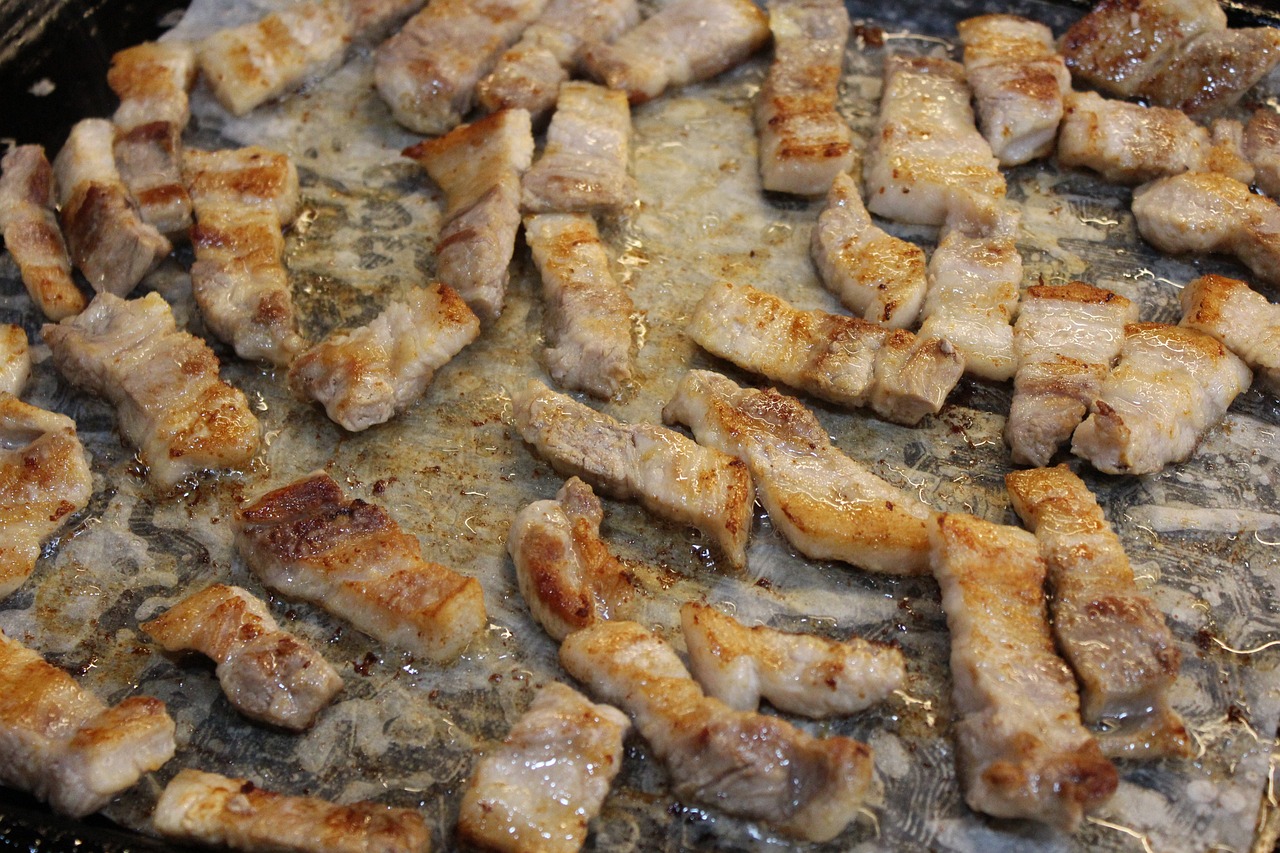
Ingredients and Preparation
Explore the rich culinary tradition of Korean kimchi, a fermented vegetable dish. Learn about different recipes, variations, and regional specialties that make this iconic dish a staple in Korean cuisine.
When it comes to making traditional Korean kimchi, the key ingredients play a vital role in creating that perfect balance of flavors. The main components typically include napa cabbage, Korean radish, garlic, ginger, scallions, and Korean red pepper flakes known as gochugaru. These ingredients are combined to form a flavorful paste that will be used to coat the vegetables.
The preparation process of kimchi is an intricate art that requires attention to detail. First, the vegetables are washed and cut into pieces, then salted to draw out excess moisture. The spicy paste made from the ingredients is then carefully massaged into the vegetables, ensuring that each piece is coated evenly. Finally, the kimchi is left to ferment in a cool place for a few days to develop its signature tangy flavor.
One interesting technique used in kimchi preparation is the burying of kimchi jars underground during the fermentation process. This method allows the kimchi to ferment slowly and develop complex flavors over time.
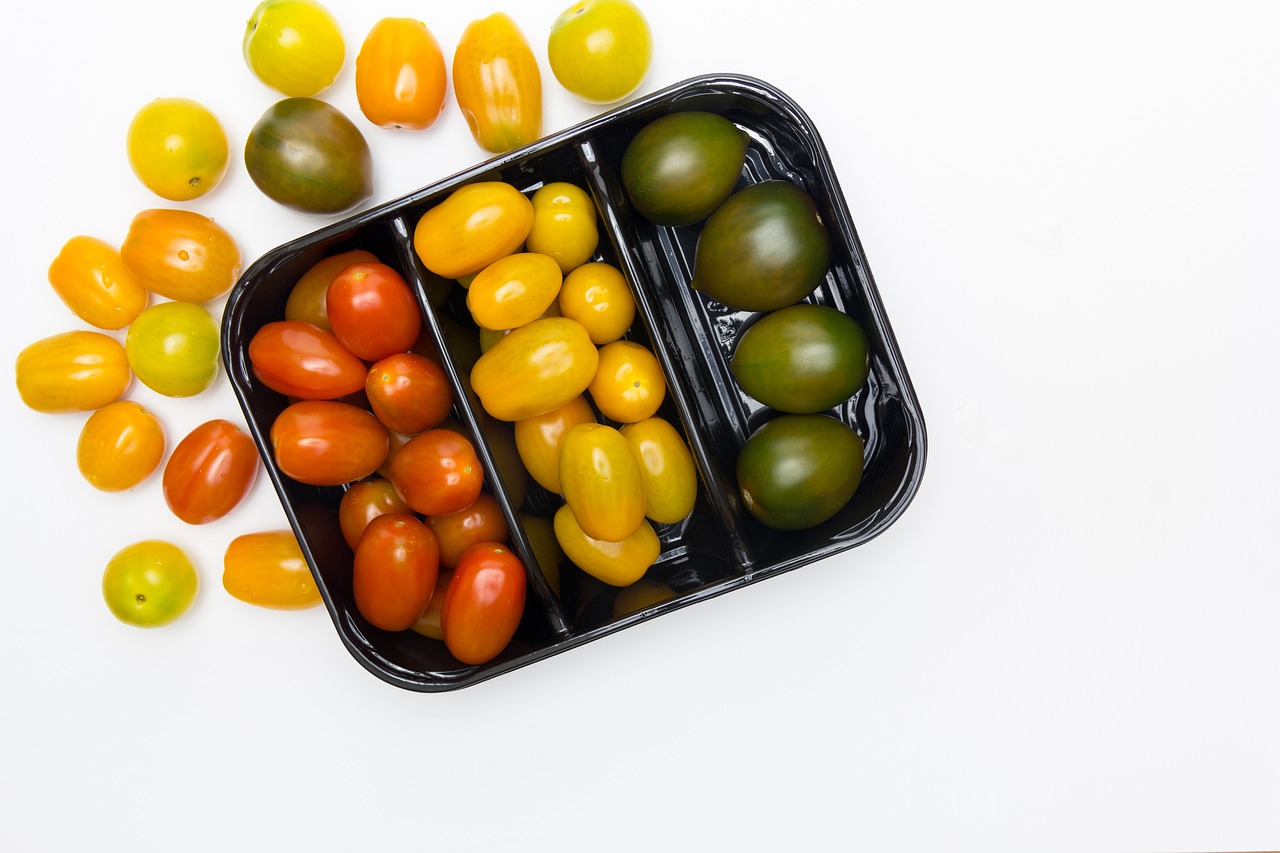
Popular Kimchi Varieties
When it comes to kimchi, the traditional napa cabbage version is just the tip of the iceberg. Korean cuisine boasts a wide array of popular kimchi varieties that cater to diverse taste preferences and culinary experiences. Beyond the familiar napa cabbage kimchi, there are unique recipes featuring radish, cucumber, and various other vegetables, each offering its own distinct flavor profile and texture.
One popular variation is the kkakdugi kimchi, made with cubed radish that delivers a crunchy texture and a slightly sweeter taste compared to the traditional cabbage kimchi. This variation is known for its refreshing and tangy flavor, making it a favorite among kimchi enthusiasts looking for a different culinary experience.
For those seeking a milder and refreshing option, oi sobagi kimchi is a popular choice. This kimchi variation features stuffed cucumber with a mix of seasonings, creating a crisp and light kimchi that is perfect for balancing out spicy dishes or enjoying on its own as a refreshing side dish.
Another beloved kimchi variety is baek kimchi, a white kimchi that skips the spicy red pepper flakes and focuses on the natural flavors of the ingredients. With a mild and slightly sour taste, baek kimchi offers a unique alternative for those who prefer a less intense kimchi experience.
Each of these popular kimchi varieties showcases the versatility and creativity of Korean culinary traditions, offering a diverse range of flavors and textures to delight the taste buds of kimchi enthusiasts around the world.

Regional Kimchi Specialties
Regional Kimchi Specialties in Korea showcase the diverse and unique flavors that different regions bring to this beloved dish. From the fiery and robust Baechu Kimchi to the refreshing and mild Dongchimi, each specialty offers a distinct taste that reflects the local ingredients and preferences.
In the bustling streets of Seoul, you can find the iconic Baechu Kimchi, made with Napa cabbage, red pepper flakes, garlic, and ginger. This spicy and tangy kimchi is a staple in Korean households and is known for its bold flavors that pack a punch.
Traveling to the southern region of Jeolla, you will encounter the delicate flavors of Geotjeori. This fresh kimchi is made with young cabbage and seasoned with a light touch of salt, creating a crisp and refreshing taste that is perfect for hot summer days.
Heading to the coastal city of Busan, you can savor the unique taste of Oyster Kimchi. This specialty kimchi features fresh oysters marinated in a spicy seasoning, adding a briny and umami-rich flavor to the traditional dish.
For those seeking a milder kimchi experience, the northern region of Pyeongan offers the Dongchimi. Made with radish and Korean pear, this kimchi is fermented in a clear, refreshing broth, resulting in a subtle and delicate flavor that is perfect for balancing rich dishes.
Each regional kimchi specialty in Korea reflects the local ingredients, climate, and culinary traditions, showcasing the diversity and creativity of Korean cuisine.

Vegan and Gluten-Free Kimchi
Vegan and Gluten-Free Kimchi offers a delightful twist on the traditional Korean dish, catering to individuals with dietary restrictions without compromising on flavor. To create this alternative version, ingredients like tamari or soy sauce can replace fish sauce, ensuring a vegan-friendly option. Additionally, using gluten-free alternatives like rice flour in the kimchi paste can make the dish accessible to those with gluten sensitivities.
When preparing Vegan and Gluten-Free Kimchi, the fermentation process remains crucial for developing that signature tangy and umami-rich taste. While traditional kimchi relies on fish sauce for its distinct flavor, vegan versions can achieve depth by incorporating ingredients like miso paste or seaweed. These substitutes not only maintain the authentic essence of kimchi but also enhance its nutritional value.
For those seeking a vegan and gluten-free kimchi recipe, experimenting with various vegetables such as radishes, carrots, or kale can offer a diverse range of flavors and textures. Combining these vegetables with a well-balanced blend of seasonings like garlic, ginger, and Korean chili powder can result in a vibrant and satisfying kimchi variation suitable for different dietary preferences.
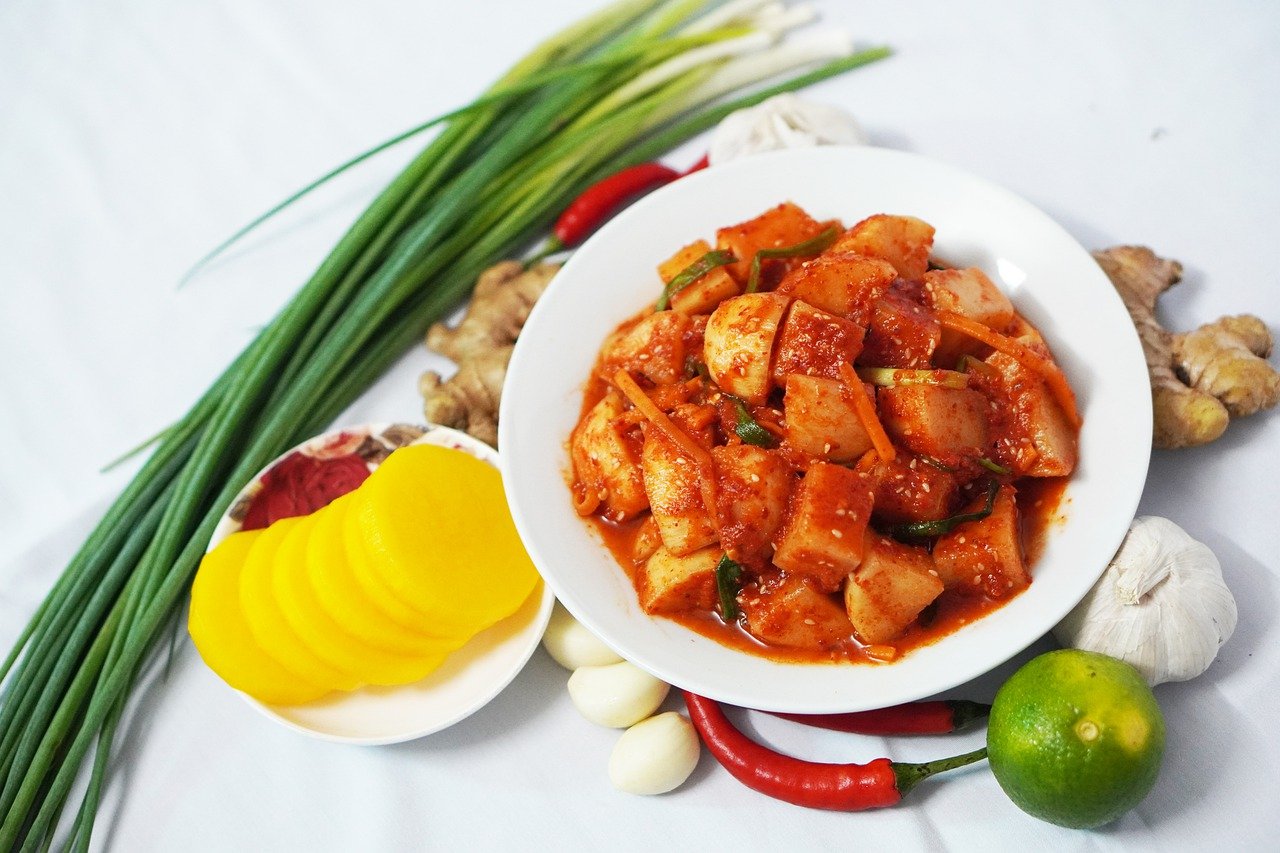
Fermentation Techniques
Fermentation is a crucial step in the traditional preparation of Korean kimchi, playing a significant role in developing its signature tangy flavor and complex taste profile. The fermentation process involves the action of beneficial bacteria, such as lactobacillus, that break down sugars in the vegetables to create lactic acid. This lactic acid not only preserves the kimchi but also imparts the characteristic sourness that is synonymous with this beloved dish.
One common fermentation technique used in making kimchi is the salt brining method. This involves salting the vegetables, typically napa cabbage, to draw out excess moisture before mixing them with the seasoning paste. The salt helps to create an environment conducive to fermentation by inhibiting the growth of harmful bacteria while allowing the beneficial bacteria to thrive and transform the flavors of the kimchi.
Another key aspect of fermentation is the duration and temperature at which the kimchi is allowed to ferment. The length of fermentation can vary depending on personal preference, with some preferring a shorter fermentation period for a milder taste, while others opt for a longer fermentation for a more pronounced tanginess. Additionally, the temperature at which kimchi ferments can impact the speed and intensity of the fermentation process, with colder temperatures resulting in a slower fermentation rate.
Throughout the fermentation process, it's essential to periodically check and taste the kimchi to monitor its progress and adjust the flavors as needed. Some enthusiasts even ferment kimchi underground in earthenware jars called onggi, which helps regulate temperature and humidity levels for optimal fermentation. This traditional method is believed to enhance the depth of flavor and complexity of the kimchi.

Kimchi in Modern Cuisine
Kimchi, once a traditional staple in Korean cuisine, has now made its mark in modern culinary creations around the world. This fermented vegetable dish has transcended its origins to become a versatile ingredient that adds a unique and tangy kick to a variety of dishes. From kimchi fried rice to kimchi quesadillas, chefs and home cooks alike have embraced the bold flavors of kimchi in innovative ways.
One popular fusion dish that highlights the adaptability of kimchi is kimchi tacos. The combination of spicy, tangy kimchi with savory meats and fresh toppings creates a flavor explosion that tantalizes the taste buds. The crunch of the taco shell paired with the umami-rich kimchi is a delightful culinary surprise that has gained popularity in food trucks and trendy eateries.
Kimchi has also found its way into contemporary recipes beyond Korean and Mexican fusion. Chefs experiment with kimchi in salads, sandwiches, and even cocktails, showcasing its versatility and ability to elevate dishes with its complex flavors. The fermented tang of kimchi adds depth and character to dishes, creating a unique dining experience that marries tradition with innovation.
As kimchi continues to gain recognition in modern cuisine, its presence on menus around the world speaks to its enduring appeal and culinary versatility. Whether used as a condiment, a main ingredient, or a flavor enhancer, kimchi's pungent and spicy profile adds a dynamic element to dishes, making it a beloved ingredient in the global culinary landscape.

Health Benefits of Kimchi
When it comes to the health benefits of kimchi, this fermented vegetable dish packs a powerful punch. Not only is kimchi a flavorful addition to any meal, but it also offers a range of advantages for your overall well-being. One of the key benefits of kimchi is its probiotic content, which supports a healthy gut microbiome. These beneficial bacteria aid in digestion and can improve gut health, leading to better nutrient absorption and overall digestive function.
In addition to its probiotic properties, kimchi is also rich in vitamins and minerals that are essential for maintaining a balanced diet. From vitamin A and vitamin C to calcium and iron, kimchi provides a variety of nutrients that can contribute to your daily intake requirements. These nutrients play a vital role in supporting immune function, promoting healthy skin, and boosting energy levels.
Moreover, kimchi is known for its antioxidant properties, which help combat oxidative stress and reduce inflammation in the body. By incorporating kimchi into your diet, you can potentially lower the risk of chronic diseases and support your body's natural defense mechanisms. The combination of antioxidants, vitamins, and probiotics in kimchi makes it a powerhouse of health benefits that can positively impact your well-being.
Furthermore, the fermentation process involved in making kimchi enhances its nutritional profile by increasing the bioavailability of certain nutrients. Fermentation breaks down complex compounds in vegetables, making them easier for the body to absorb. This means that the nutrients in kimchi are more readily available for your body to utilize, maximizing the health benefits you can derive from this traditional Korean dish.
Frequently Asked Questions
- What is kimchi?
Kimchi is a traditional Korean dish made from fermented vegetables, typically napa cabbage and radishes, seasoned with a variety of spices and seasonings.
- Is kimchi spicy?
Kimchi can vary in spiciness depending on the recipe and personal preference. Some varieties are quite spicy, while others are milder in taste.
- How long does kimchi last?
Properly stored kimchi can last for several months in the refrigerator. The flavor may continue to develop over time as it ferments.
- Can I make vegan kimchi?
Yes, vegan kimchi can be made by omitting fish sauce or using a vegan alternative. The fermentation process remains the same, creating a flavorful plant-based version of this traditional dish.
- What are the health benefits of kimchi?
Kimchi is rich in probiotics, vitamins, and antioxidants, which can aid digestion, boost the immune system, and promote overall gut health. Consuming kimchi regularly may have positive effects on one's well-being.









